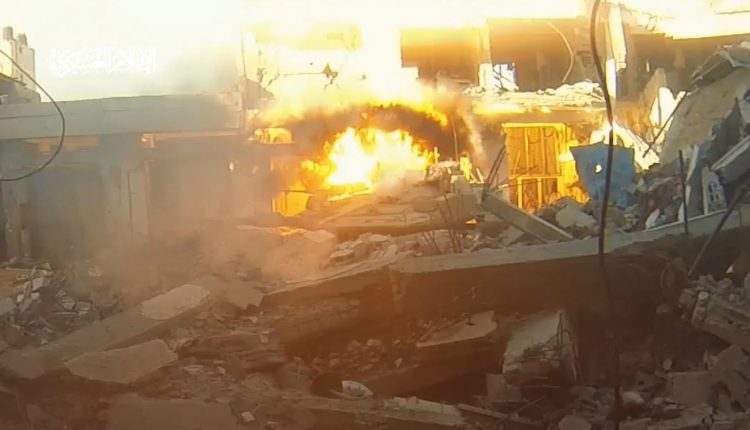GAZA, Sept. 29 (YPA) – The Palestinian resistance has reasserted its presence in the Gaza Strip with force, not through direct confrontation, but by adopting the historical “war of attrition” doctrine.
In recent weeks, the battlefield has witnessed a series of calculated operations marked by strategic timing and geographical dispersion. These actions have shattered the Israeli occupation’s presumption of full control and disoriented its military units, which are now bogged down in a territory that has been destroyed but not defeated.
The resistance’s operations have expanded beyond a narrow geographical scope to encompass the entire Strip. From Khan Yunis in the south, through the neighborhoods of Shujaiya and Jabalya in the north, to the areas around Rafah and Tel al-Sultan, resistance factions—led by the Izz al-Din al-Qassam Brigades and Al-Quds Brigades—have targeted Israeli outposts and elite units with meticulous ambushes, surprise explosions, and precise sniping.
A key aspect of this tactic is the deliberate temporal and spatial distribution of attacks. They are successive yet unpredictable, striking in areas the occupation believed it had “cleared.” This dynamic isn’t aimed at achieving territorial gains but at exhausting the enemy in prolonged battles, slowly but surely accumulating human and material losses—a fundamental element of attrition warfare.
Two Tactical Weapons
The resistance fighters have relied on the factor of surprise as a primary tool. Operations were executed using pre-planted explosive devices, mines hidden in rubble, and ambushes sprung after a feigned withdrawal, trapping Israeli soldiers.
On a parallel front, the resistance has used media as a psychological weapon to impact the morale of the occupation soldiers. This is done by publishing videos of sniping and clashes and broadcasting messages that reveal the names of killed soldiers. This tactic has intensified pressure within Israeli society and deepened anxiety and fear among soldiers in the field. The occupation commanders themselves have admitted to the existence of “areas that cannot be entered without losses,” an implicit acknowledgment of the effectiveness of this psychological warfare.
This tactical shift has created chaos within the ranks of the occupation army, which had long relied on its air and intelligence superiority. It now finds itself entangled in street warfare that drains its soldiers and redefines the rules of engagement. The resistance has transformed from a defensive player into an offensive one, redirecting the course of the war forced upon it.
These developments on the ground are not isolated from the political context. Attrition operations carry clear strategic messages, the most important of which are refuting the occupation’s narrative of “ending the threat in Gaza,” affirming the resistance’s capacity for persistence and initiative, and establishing a new equation that links any military advance to a high number of Israeli casualties. This dramatically raises the political and security costs of the military operation.
Sources within the resistance indicate the goal is to “disrupt the occupation’s plans for complete control” of the Strip, impede any negotiations that do not meet its demands, and pressure international parties to acknowledge that a military solution is not possible.
The Palestinian Fighter’s Doctrine
The Palestinian fighter is the cornerstone of this long battle. The continuous operations are driven by a deeply rooted religious and national doctrine that views resistance as a path to liberation. This belief system creates fighters willing to lie in wait for weeks underground or carry out commando operations with minimal resources. In this view, martyrdom is not an end but a part of the resistance project’s continuation, which explains the factions’ ability to recruit new members despite heavy losses.
The recent operations have shaken the Israeli home front, which is increasingly confronted with acknowledgements of human losses among soldiers and officers in resistance ambushes. This attrition fuels domestic pressure on the occupation government and deepens political divisions over the wisdom of continuing the military operation.
In contrast, these operations have raised the morale of Palestinians, confirming that the resistance is capable of survival and initiative. What is happening in Gaza is no longer just an exchange of fire but a “battle of planning and patience” managed by a professional resistance doctrine that uses geography, time, and surprise as strategic weapons to inflict the greatest possible losses on the Israeli enemy.
YPA


